

Derek Fung
Revived Ram 1500 TRX could debut on New Year's Day
2 Days Ago
The new flagship of the GWM Ute line brings a different four-wheel drive system plus more off-road gear, for a premium. Is it still a bargain?
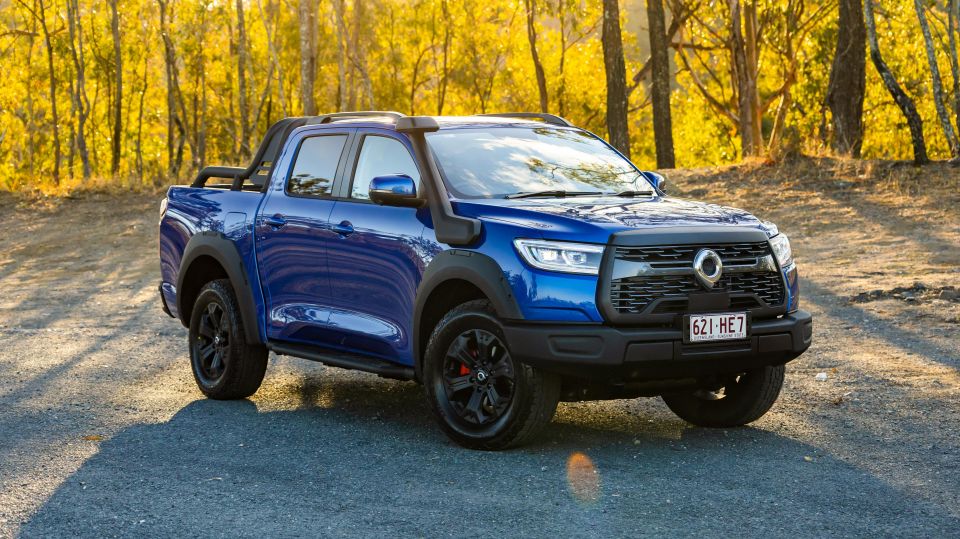
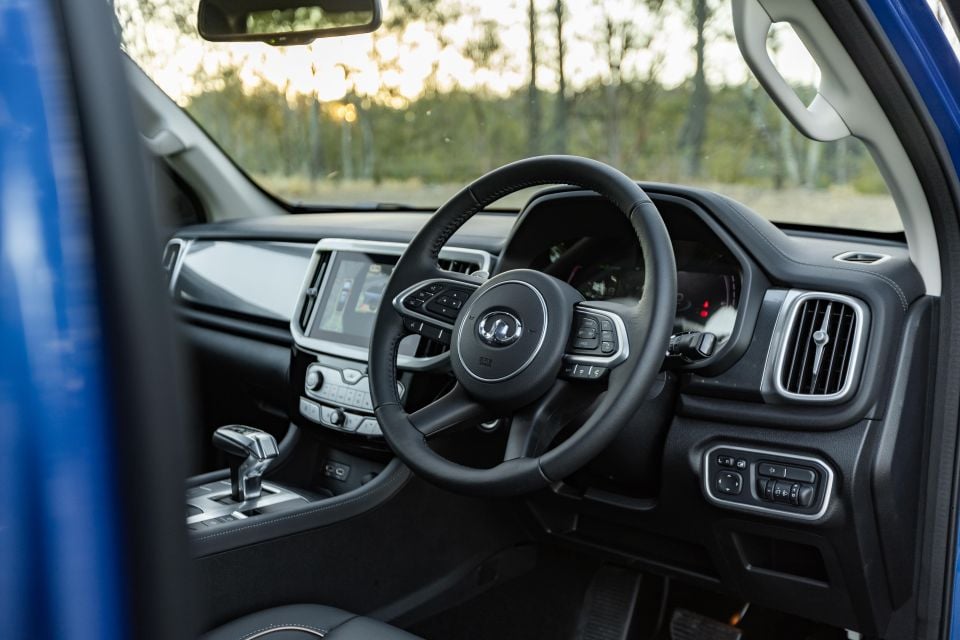

Quickly see how this car stacks up against its competition. Select any benchmark to see more details.
Where expert car reviews meet expert car buying – CarExpert gives you trusted advice, personalised service and real savings on your next new car.
Almost every ute manufacturer has been rolling out more rugged-looking variants of late, and that includes GWM.
Some of these feature largely cosmetic alterations, but the GWM Ute Cannon-XSR isn’t a paper tiger.
It mightn’t have any extra power, but it has a different four-wheel drive system plus extra off-road features designed to make it easier to take off the beaten track.
Oh, and there’s plenty of that cosmetic stuff, too. It’s largely functional however, from the snorkel to the steel front and rear bumpers. Almost everything that’s chrome on less expensive Cannons is black in the XSR as well, and it looks meaner as a result.
By the way, the GWM Ute seems to be suffering an identity crisis. The owner’s manual calls it the Poer and one of the touchscreen shortcuts says P-Series, which are what it’s referred to as in China.

Poer translates to Cannon, but it’s unclear why GWM insists on marketing it as the GWM Ute and relegates the cool Cannon name to a trim level designation… which it then uses for every GWM Ute.
GWM, just call it the Cannon already.
The Cannon-XSR arrived this year as the new flagship for the Cannon line, priced at $52,990 drive-away, or $51,490 drive-away for ABN holders. That’s $6500 more than the former flagship, the Cannon Vanta.
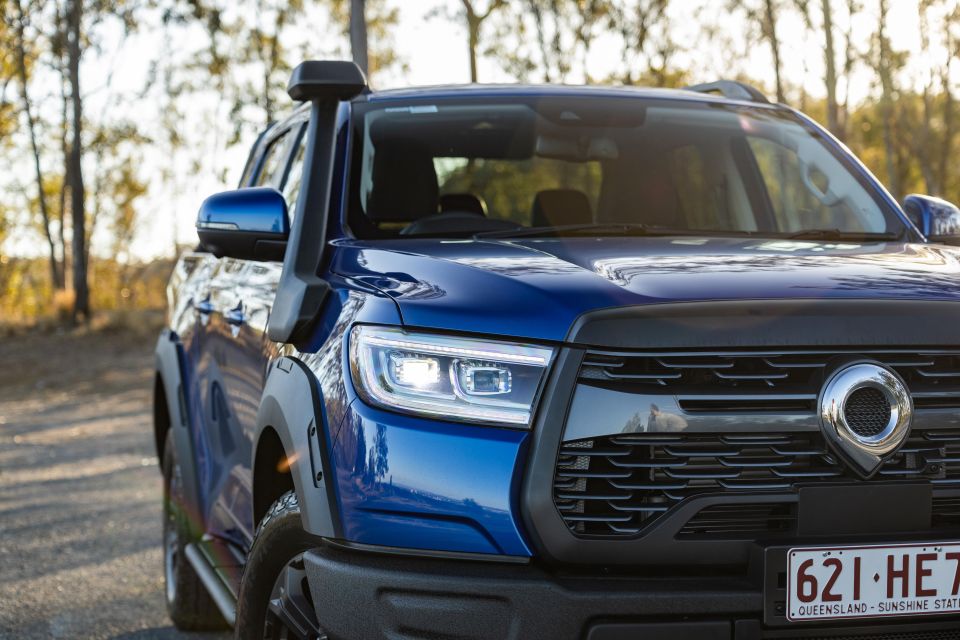
It stacks up well when compared with other more focused off-road variants from rival ute lineups. A Nissan Navara SL Warrior starts at $61,250 before on-road costs when equipped with an automatic transmission, while a Mazda BT-50 Thunder is more expensive still at $73,945 before on-roads.
For the price of a Cannon-XSR, you’re looking at a base dual-cab 4×4 version of a Ford Ranger or Toyota HiLux, or a top-spec version of a SsangYong Musso or LDV T60.
Buy your new car without the stress. It's fast, simple and completely free.

Great service from Travis and team, second time I have used this business would not hesitate to recommend them to anyone
Craig C.
Purchased a Ford Ranger in Sunshine Coast, QLD
CarExpert helped Craig save thousands on his Ford Ranger, now let us save you on your next new car.
Find a dealThe Cannon-XSR has one of the nicest interiors of any ute in this segment.
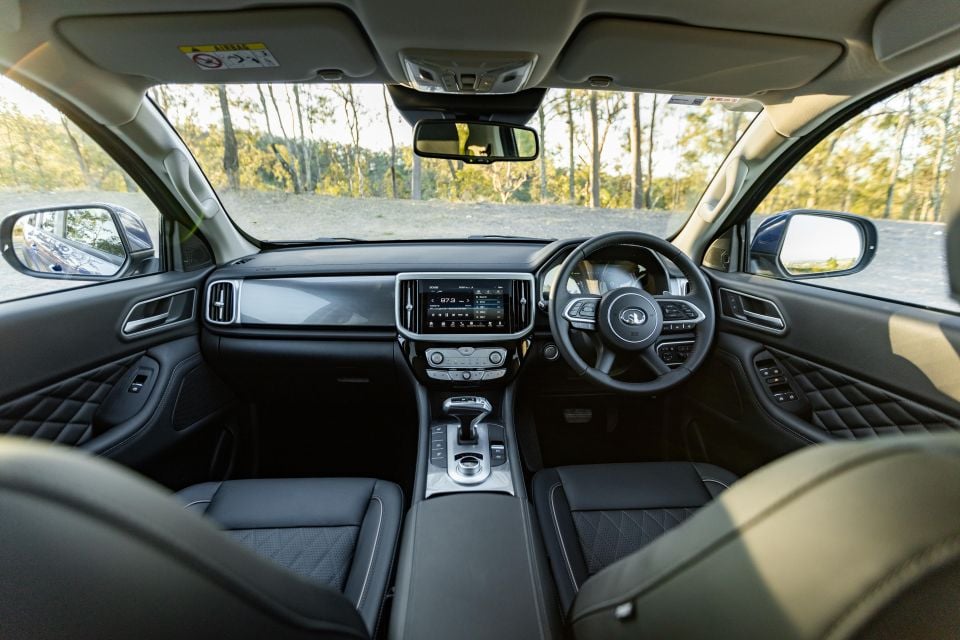
It might look all tough and rugged outside, but inside it’s damn near sumptuous. There’s a high-quality, soft-touch dashtop with elegant stitching details, plus soft-touch trim on the front door tops and sides of the centre console.
The quilted leather-look upholstery on the doors is extremely soft, and ties in with the quilted inserts on the seats. The seats are comfortable, and are neither too firm nor overly squishy.
The shifter is a lovely unit, though its surround can be blindingly reflective, while even the paddle shifters feel metallic and not just like cheap plastic. The steering wheel they’re attached to is quite tactile too, and in the Cannon-XSR it adjusts for both rake and reach.
Everything feels sturdy, and we didn’t observe any build quality issues. The doors feel a bit flimsy, however, and need to be slammed shut.

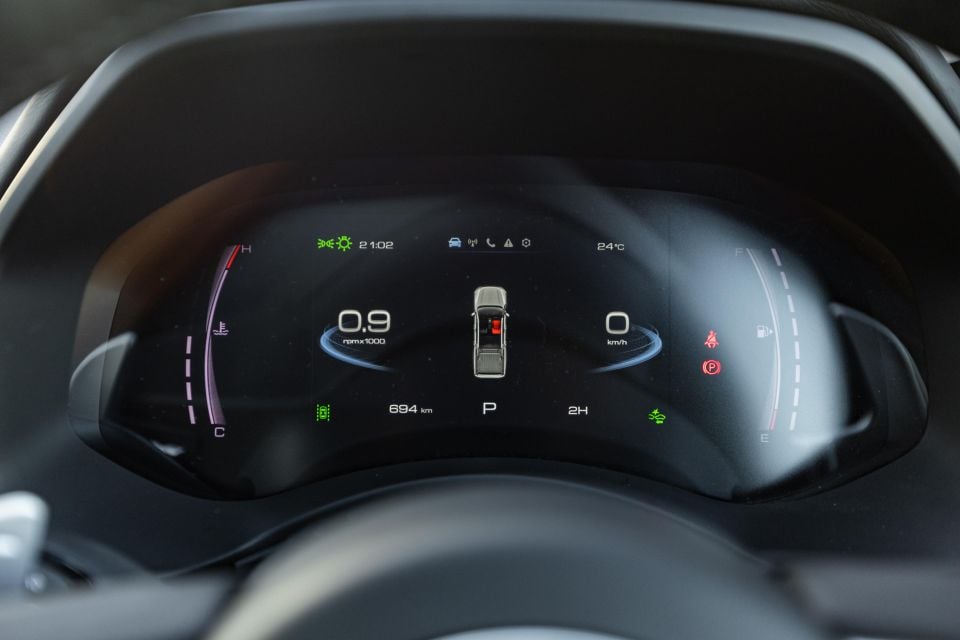
The interior is a bit last-generation Haval SUV in appearance, but that’s not necessarily a bad thing.
It means there’s plenty of physical switchgear, including for the climate control, instead of most functions being controlled only through the touchscreen.
GWM revealed a version of the Cannon earlier this year in China that strips much of that physical switchgear away and includes freestanding 7.0-inch digital instrument and 12.3-inch touchscreen displays, but it has yet to confirm whether that interior will come here.
The switchgear isn’t perfect – some of the buttons have extremely small pictograms, and they’re all finished in that “metal-look” silver finish that was so common in the 2000s. Nevertheless, we’re glad to still see proper knobs.
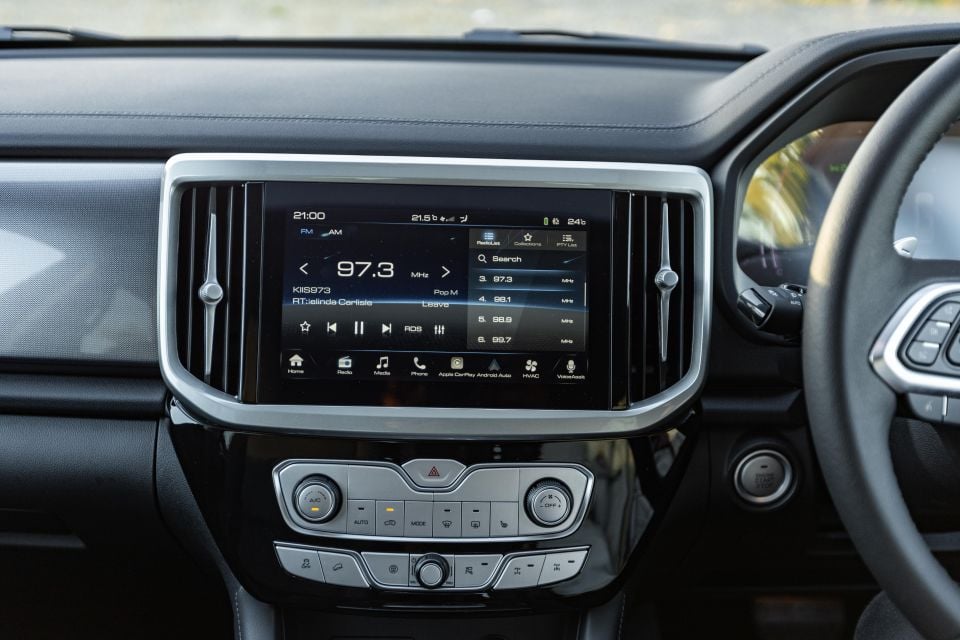
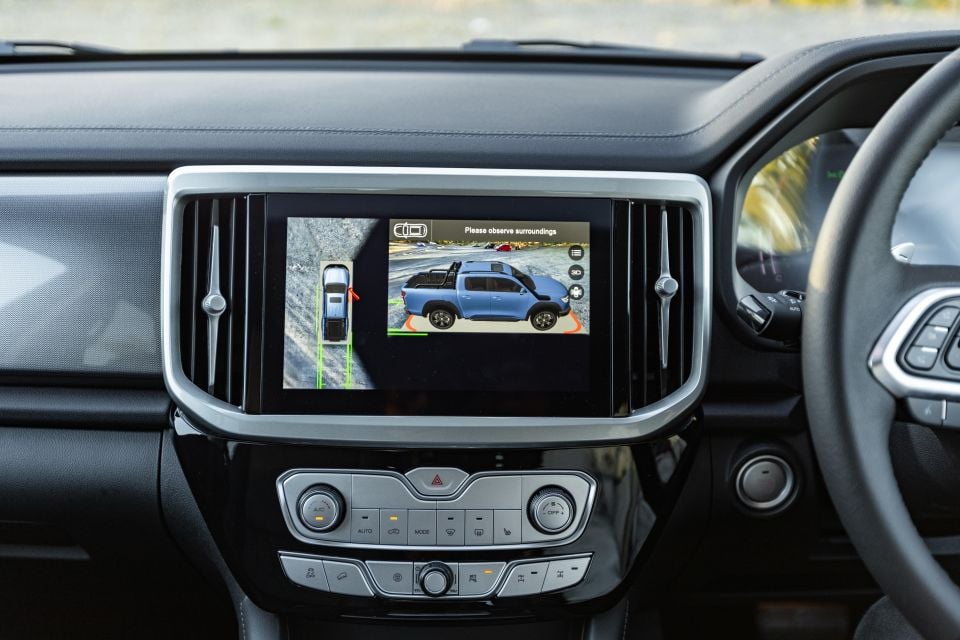
Joining the silver plastic trim overused in the 2000s is gloss black trim that’s overused in the 2020s. There’s some welcome relief, however, with distinctively patterned and textured metal-look trim running along the dashboard.
Minor gripes with the design aside, not only is this interior nice for a ute, it would be pretty nice in an SUV at this price point.
As is expected from a GWM product in 2023, the quality of the surround-view camera, which features a 3D view, is superb. There’s even a surprising level of adjustability – you can change the view of the car from translucent to transparent or opaque, and even customise the colour of the car depicted.
What a shame, then, that I couldn’t find a button to stop the camera view from popping up so frequently. Pull to a stop at a traffic light, for example, and it pops up.
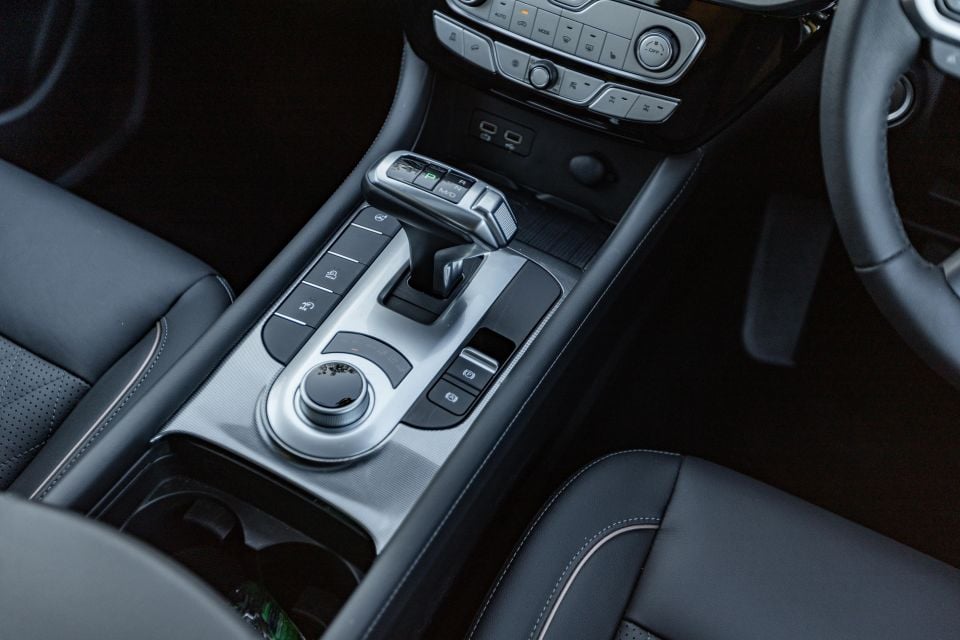
It wouldn’t be such a big deal if it didn’t interrupt prompts you were making to the smartphone mirroring at the time, or if you could still adjust audio volume while the camera view is on screen.
Yes, you can turn off the camera off with a press of a button, but it’s flummoxing that GWM thinks you’ll want to see the surrounds of your vehicle every time you stop at a red light.
Buttons for auto hold, the off-road turn assist and cruise control features, and steering modes can be found on the centre console, though the hill descent control switch is on the centre stack.
There’s a well-sized centre console bin with a sliding compartment tray which can be pulled forward to cover the cupholders. The cupholders are deep but narrow, and larger cups may struggle to fit. The doors lack a traditional cylindrical cut-out for bottles, but you can still easily and securely fit a 1L bottle in them.
The user interface for the digital instrument cluster and infotainment touchscreen looks modern, but neither screen is perfect.

While you can customise the themes for both, the digital instrument cluster is a bit simplistic and is dominated by a view of the vehicle when lane support systems are on.
The infotainment system is inoffensive, though the lack of satellite navigation is disappointing – particularly if you plan on tackling rugged rural terrain, which is what the Cannon-XSR is designed for.
Your only option, then, is to download offline maps to display in Android Auto or Apple CarPlay. Both smartphone mirroring apps require a cable to connect.
The Cannon-XSR’s side steps are really sturdy, and make it easier to clamber up into this high-riding ute. The rear doors open quite wide, but the opening isn’t exceptionally long.
Once you’re in the back seat, you’ll find plenty of room in every dimension, though headroom is reduced from lesser Cannons as the sunroof panel needs some place to retract.
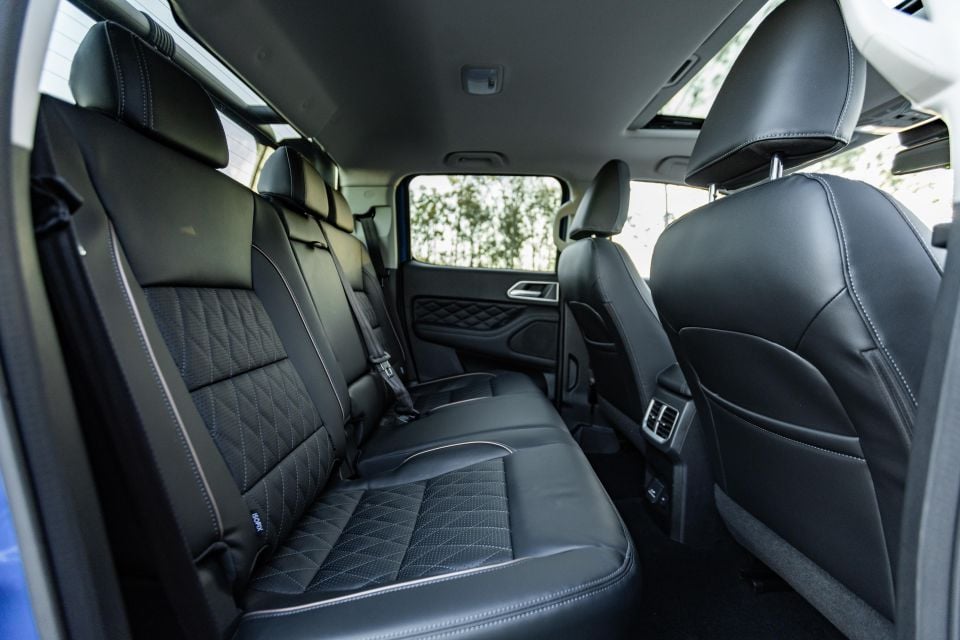
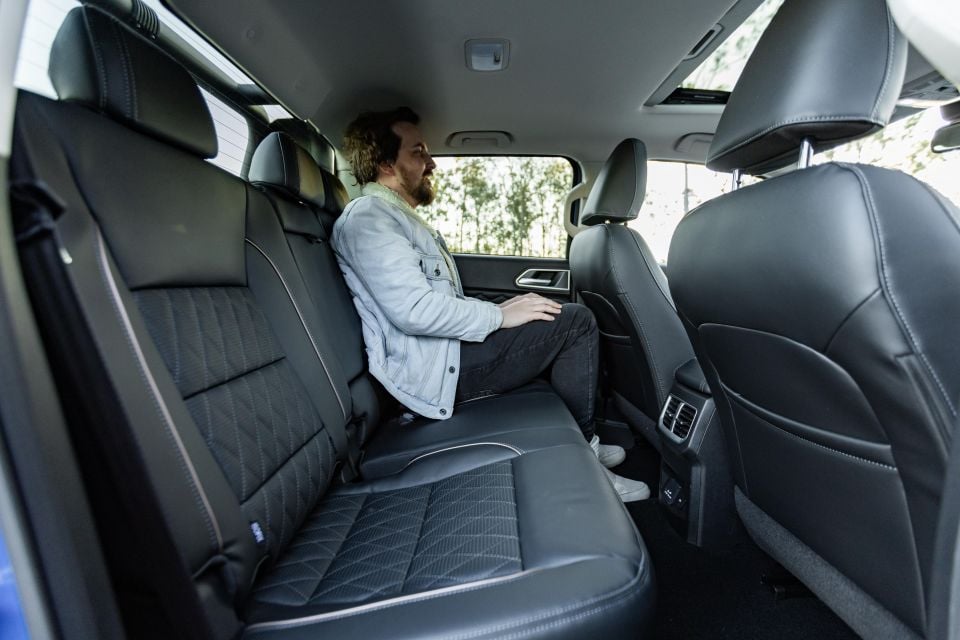
There’s a decently flat driveline hump, which makes it more comfortable to sit in the centre-rear seat.
One family member who I’ve now taken out in almost every ute on the market did observe, however, the Cannon’s rear bench is quite upright and not exceptionally supportive.
In terms of amenities, there’s a single USB-A outlet plus a 220V/120W outlet, as well as map pockets on the soft front seatbacks and air vents, and bottle holders in the doors. There’s a centre armrest, but unusually this lacks cupholders.
There are ISOFIX and top-tether anchor points for child seats on the outboard rear seats, but no anchor point for the centre seat.
As Matt Campbell has observed, the child-seat anchor points are among the easiest in this segment to hook a top-tether strap to.
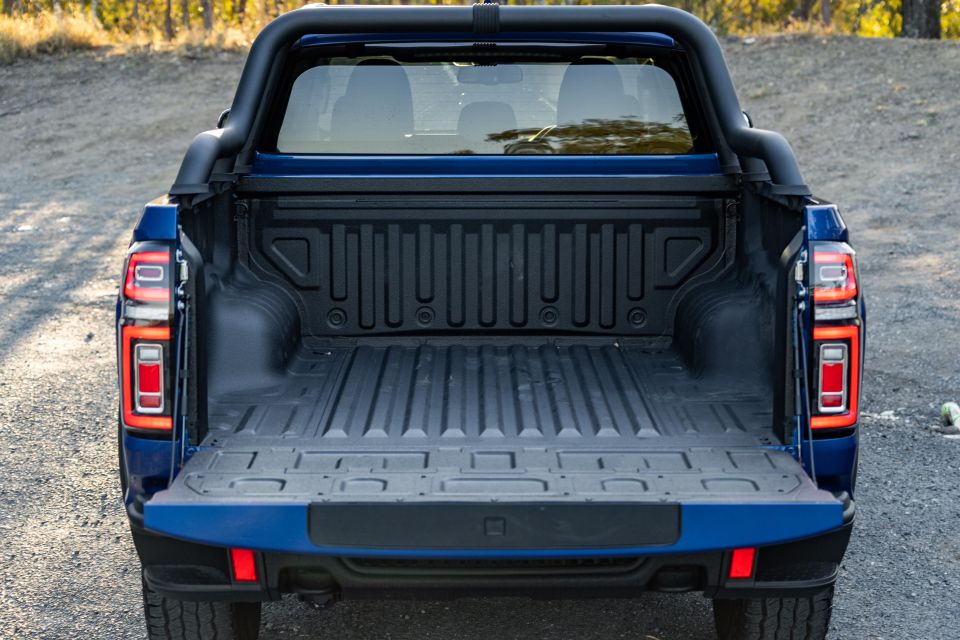
Moving around the back of the Cannon-XSR, the bumper has little cut-outs on either side that act as steps. Once you’ve dropped the tailgate, you’ll find tie-down points in each corner of the tub.
The lined tub measures 1520mm by 1520mm, and there’s a tailgate with pneumatic arms and a handy pull-out stepladder.
Payload takes a hit compared with other Cannons, which all boast at least 1000kg. The XSR quotes an 875kg payload.
The Cannon-XSR uses the same 2.0-litre four-cylinder turbo-diesel as the rest of the Cannon range, producing 120kW of power at 3600rpm and 400Nm of torque between 1500 and 2500rpm.

It’s definitely at the less powerful end of the segment, considering rivals like the Ranger and HiLux offer up to 500Nm from their four-cylinder engines.
We recorded a 0-100km/h time of 12.72 seconds, which is quite laggardly, though its stopping distance was just 41.04m when braking at 100km/h. That’s decent, given it’s riding on all-terrain tyres.
Drive is sent through an eight-speed automatic transmission to a part-time four-wheel drive system, instead of the full-time setup of less expensive Cannons.
There are selectable 2H, 4H and 4L modes, along with locking front and rear differentials, a crawl mode, and a system that brakes the inside wheels to allow you to turn tighter on loose surfaces.
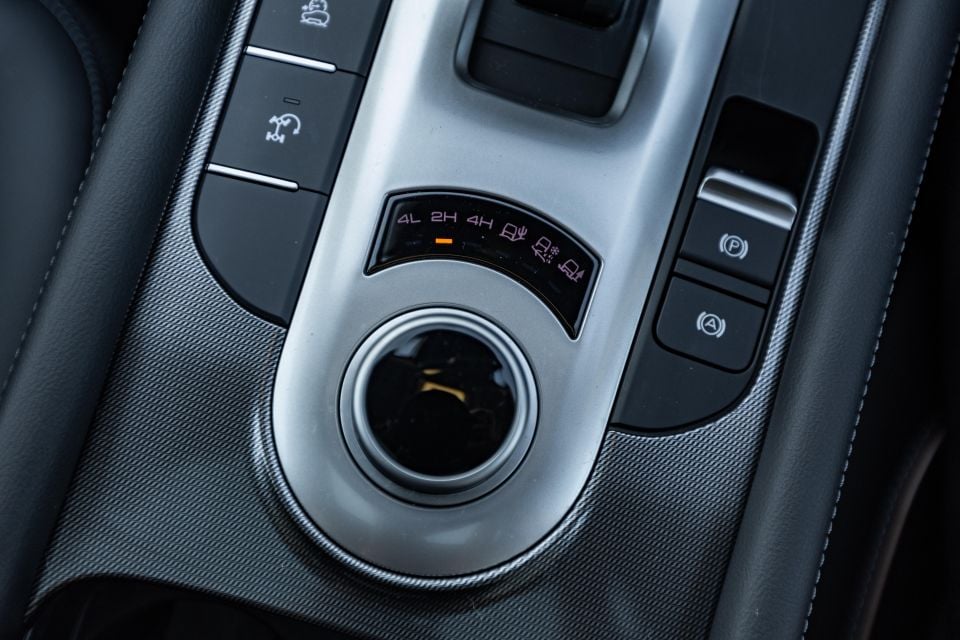
There’s also a new underbody bash plate to protect the most important oily bits when the going gets tough, and a passive stabiliser bar up front.
All Australian-market Cannons, including the Cannon-XSR, use leaf-spring rear suspension like many of their rivals. However, a multi-link setup is available in China. Unlike some rivals, the Cannon-XSR has rear disc brakes.
Over a loop comprising inner-city, suburban and highway driving, we averaged 10.1L/100km. Over the course of a week, which included a trip to the Gold Coast, this increased only slightly to 10.2L/100km.
The official combined cycle claim is 9.4L/100km, identical to other four-wheel drive variants.
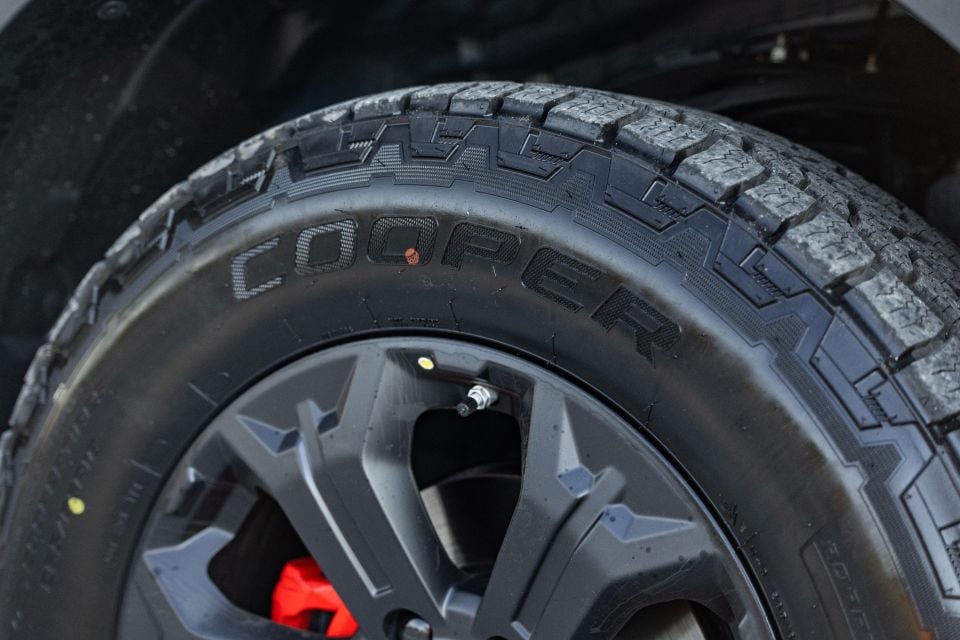
Braked towing capacity remains 3000kg, even though most rivals can tow 3500kg.
Unusually, GWM doesn’t quote approach, departure or breakover angles for the Cannon-XSR.
The XSR doesn’t feel too different from other Cannons on pavement.
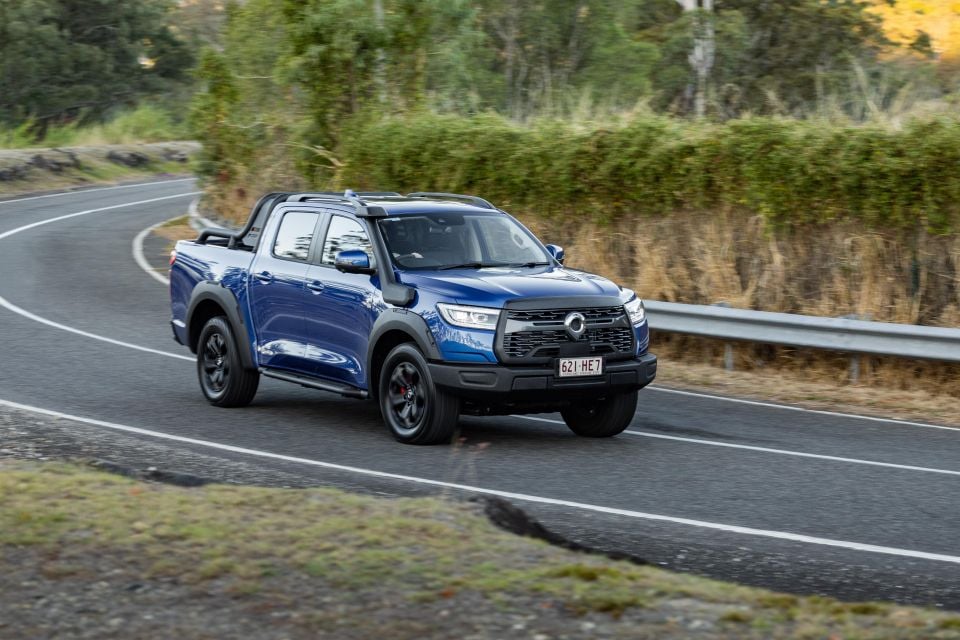
Where expert car reviews meet expert car buying – CarExpert gives you trusted advice, personalised service and real savings on your next new car.
The engine remains a notable weak spot, as it’s been left behind by almost every rival.
It feels a bit breathless, with a delay off the line as the turbo kicks in. You feel like you need to work the Cannon-XSR harder than its rivals, even with just yourself onboard. There just isn’t the low-end flexibility you find in, say, an Isuzu D-Max.
The eight-speed automatic transmission does, however, shift smoothly and we didn’t have any issues with it once we gathered some speed.
There’s the generic diesel ute soundtrack, while at highway speeds the cabin can get a bit boomy as wind noise penetrates it.
But the Cannon-XSR idles fairly smoothly, with no untoward vibrations, and at city speeds it doesn’t feel appreciably noisier than most rivals.
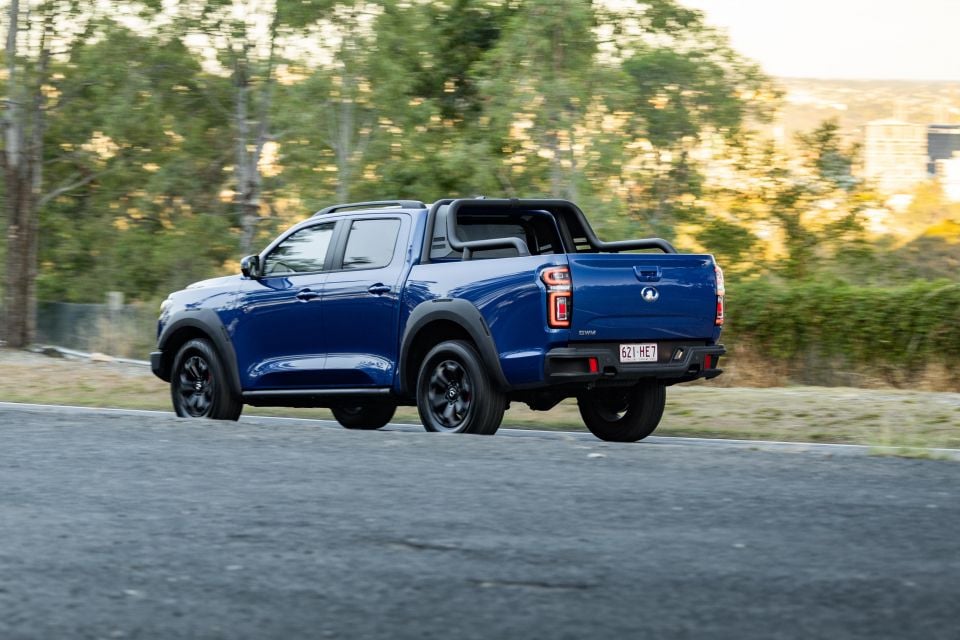
There are three levels of steering weighting, selectable via a button on the centre console. It’s a clever setup that isn’t common in this segment, and there’s a noticeable difference between Comfort and Light.
The latter certainly is light and vacant to boot, and we left it in Comfort even if that mode can still feel a bit heavy during low-speed manoeuvres.
Ride quality is disappointing. On smoother roads it’s fine, but it gets fidgety when the pavement is patchier. It clomps clumsily over divots in the road, and on rural roads it gets a bit tiresome unladen.
Suffice it to say, the Cannon-XSR has a habit of making any road feel less smooth than it is. Body control may be decent at higher speeds, but its low-speed ride is mediocre.
Where the Cannon-XSR shines is off-road, at least in terms of the confidence it inspires in novice off-roaders.
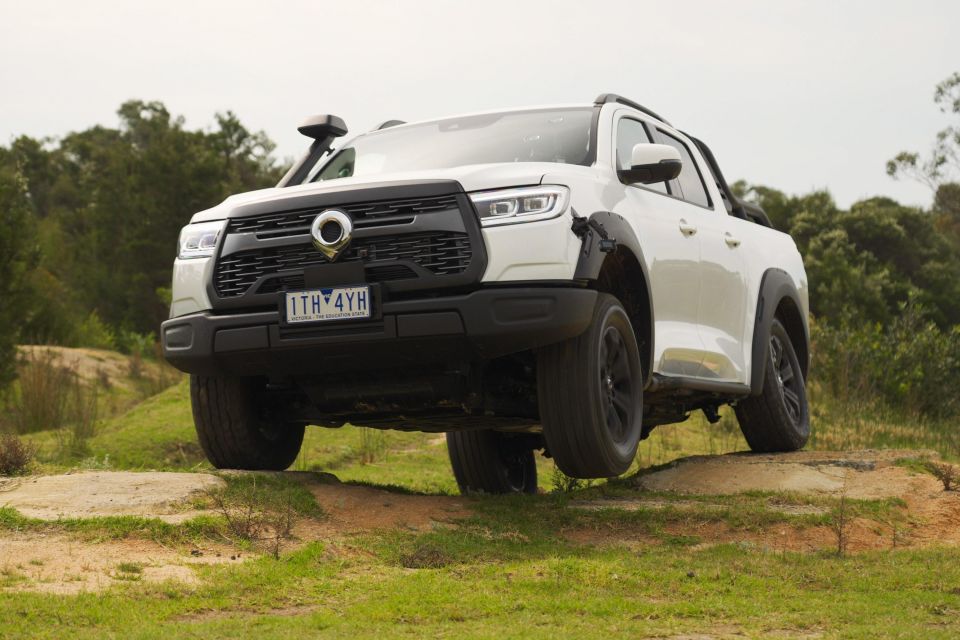
We put it to the test on a short off-road track with a mix of rutted tracks and moguls, but came away impressed with the technology packed into this Chinese ute.
There are locking front and rear differentials and selectable low-range gearing, hardly exotic fare in this segment. But beyond those, there’s a forward-facing camera view when you engage 4H, which also features tyre mark guidelines, and a split-screen view in 4L that shows you either side of the vehicle.
Even the simple inclusion of explanatory screens when adjusting between four-wheel drive modes is handy for those who are just getting into off-roading.
An off-road cruise control function can be activated when in 4L, while a steering assist function is available when cruise is activated. GWM says this can “effectively reduce the turning radius while maintaining the set vehicle speed”, resulting in tighter turns.
It’s a rare inclusion in this segment, and Paul Maric found it worked as advertised.
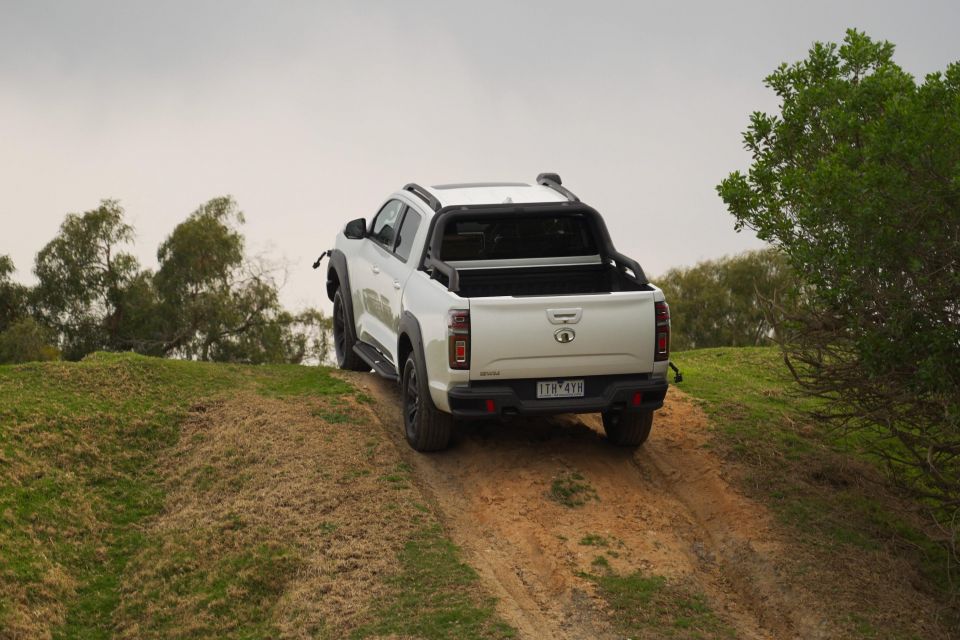
There are also sand, mud and snow modes, plus an off-road thermal management mode, selectable via touchscreen, that runs fans for longer to dissipate the heat
In Paul’s testing, he found hills and moguls were tackled with aplomb, but he observed traction control would repeatedly interfere even in 4L mode with the rear diff lock engaged. There appears to be no way to entirely switch the system off.
The on-road cruise control needs work. Back on the highway, it has very patchy performance – without adjusting the distance setting, we would find it sometimes kept an appropriate distance, and other times it would want to sit 20km/h under the speed limit.
The combination of adaptive cruise control and lane centring is handy, however, and the Cannon-XSR will generally stay planted in its lane – on some roads it worked quite well, though Paul’s testing at the proving ground saw the ute exhibit less than exemplary behaviour.
You can have just lane-keep assist on or also activate lane-centring, and having the latter on but at its lowest sensitivity struck a good balance.

Activated thusly, it’s a bit intrusive but rarely erratic, and makes highway driving a breeze. Lane centring works at speeds above 60km/h. You can adjust the level of sensitivity for not only the lane support systems, but also the autonomous emergency braking.
We also appreciate how the Cannon will remember if you had auto hold engaged, saving you from having to activate it upon every startup. Also neat is how the current gear is displayed in the digital instrument cluster, even if you’re not shifting manually.


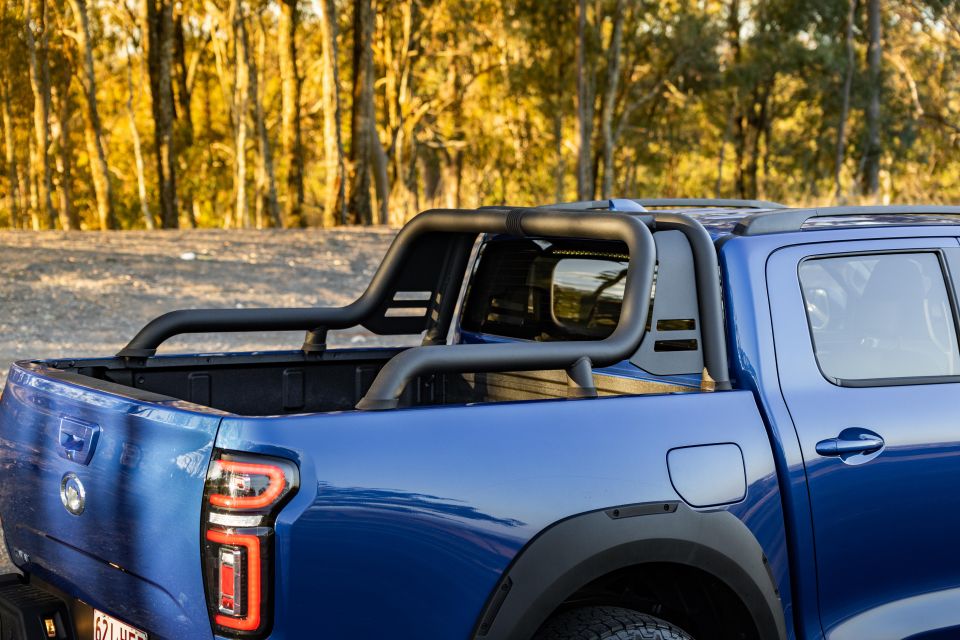
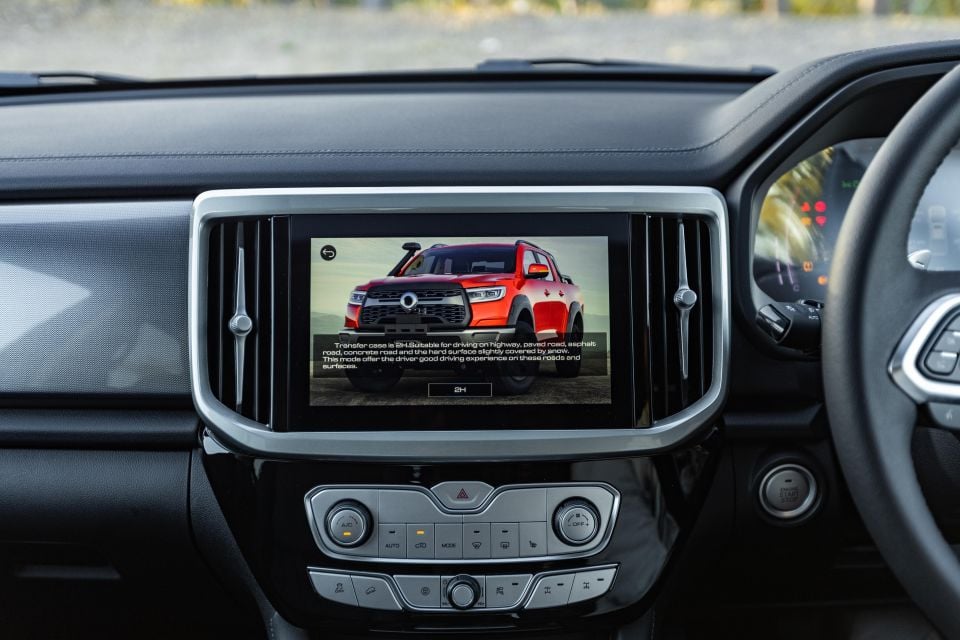
The Cannon-XSR is the only GWM Ute to offer the following features:
That’s in addition to kit found in the Cannon-X, which includes:
There’s no satellite navigation or DAB digital radio, and while there’s no up-spec sound system: you get the same six-speaker system as the rest of the range, and it’s fine.
After initially failing to earn a five-star ANCAP rating, the GWM Ute range was modified by the factory.
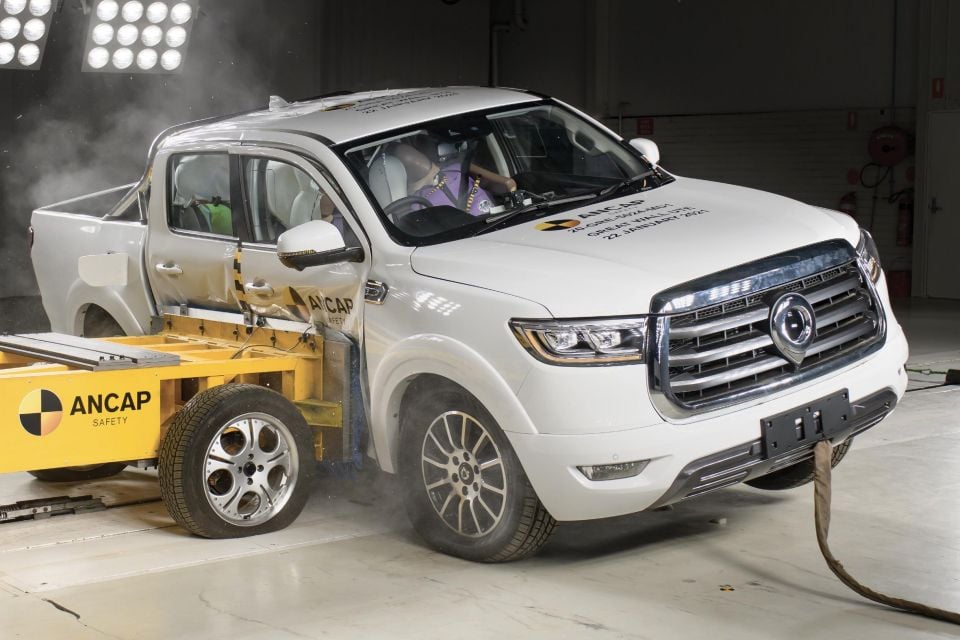
It was awarded a five-star safety rating in November 2021, on the condition vehicles built between September 2020 and July 2021 are retroactively upgraded to the same standards as the five-star vehicle tested later in 2021.
These later vehicles scored 86 per cent for adult occupant protection, 87 per cent for child occupant protection, 67 per cent for vulnerable road user protection, and 73 per cent for safety assist.
Standard across all Cannon models are:
The Cannon-L CC gains a surround-view camera and front parking sensors, while the Cannon-X gains safe exit warning. The Cannon-XSR includes all of the above. Bafflingly, there’s no blind-spot monitoring on any GWM Ute.
The Cannon-XSR is backed by a seven-year, unlimited-kilometre warranty, with five years of roadside assistance.

GWM also offers capped-price servicing. The first service is required at six months or 5000km and costs $260, with the second at 18 months/15,000km and subsequent services at 12-month/10,000km intervals.
The second through fifth services are capped at $360. Not included in this capped pricing is the replacement of wear and tear items such as tyres, brake pads, wiper blades and drive belts.
In the showroom, the Cannon-XSR makes a compelling case for itself.

The Chinese automakers are making their rivals look old-fashioned with their increasingly sophisticated technology. Chinese buyers are also becoming increasingly fond of rugged off-roaders, and GWM has catered to off-road enthusiasts both here and abroad.
The Cannon-XSR combines modern, useful off-road equipment with serious capability. But it’s a juxtaposition of new, fresh tech with old-fashioned dynamics. The engine feels underdone, and ride quality is lacking.
We’re impressed with how the Cannon-XSR makes it easy for a novice off-roader to tackle a trail with its combination of off-road features.
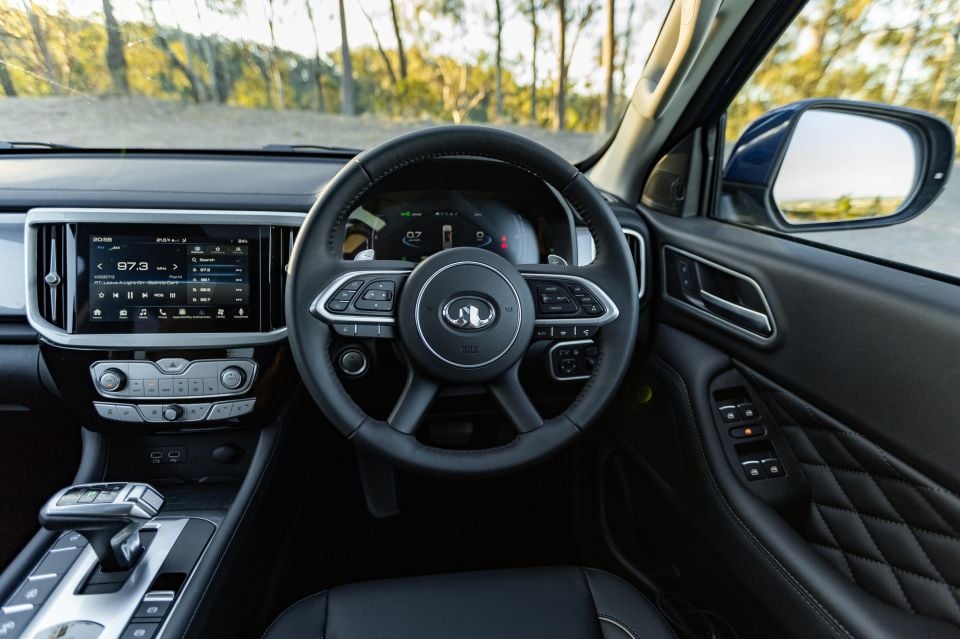
If you’re not intending to go off-road, however, we’d steer you towards more affordable Cannon variants that also boast a full-time four-wheel drive system.
This comes in handy if you want all-weather traction on pavement, while there’s still solid off-road hardware if you ever do feel like venturing off-road.
If you must have the mean, blacked-out look of the Cannon-XSR, you can get a very similar look with the Cannon Vanta. You’ll also still get one of the nicest interiors in the segment.
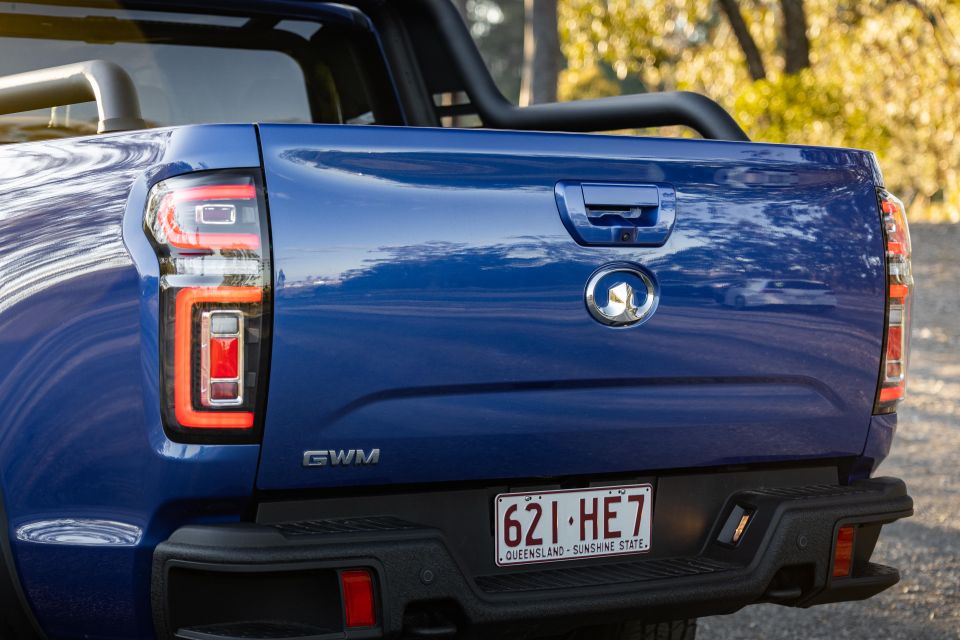
Click the images for the full gallery
MORE: Everything GWM Ute
Where expert car reviews meet expert car buying – CarExpert gives you trusted advice, personalised service and real savings on your next new car.
William Stopford is an automotive journalist with a passion for mainstream cars, automotive history and overseas auto markets.


Derek Fung
2 Days Ago


Damion Smy
5 Days Ago


Ben Zachariah
7 Days Ago


James Wong
13 Days Ago


Ben Zachariah
13 Days Ago
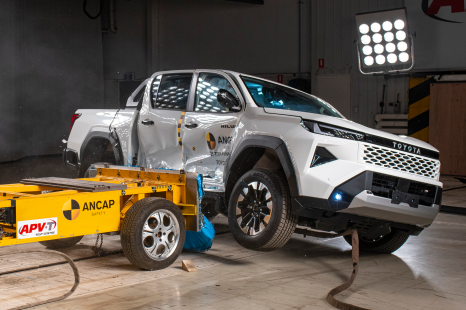

William Stopford
14 Days Ago